High Line
The High Line is a 1.45-mile-long (2.33 km) elevated linear park, greenway, and rail trail created on a former New York Central Railroad spur on the west side of Manhattan in New York City. The High Line's design is a collaboration between James Corner Field Operations, Diller Scofidio + Renfro, and Piet Oudolf. The abandoned spur has been redesigned as a "living system" drawing from multiple disciplines which include landscape architecture, urban design, and ecology. The High Line was inspired by the 4.7 km (2.9 mi) long Coulée verte (tree-lined walkway), a similar project in Paris completed in 1993.
The park is built on an abandoned, southern viaduct section of the New York Central Railroad's West Side Line. Originating in the Meatpacking District, the park runs from Gansevoort Street – three blocks below 14th Street – through Chelsea to the northern edge of the West Side Yard...Read more
The High Line is a 1.45-mile-long (2.33 km) elevated linear park, greenway, and rail trail created on a former New York Central Railroad spur on the west side of Manhattan in New York City. The High Line's design is a collaboration between James Corner Field Operations, Diller Scofidio + Renfro, and Piet Oudolf. The abandoned spur has been redesigned as a "living system" drawing from multiple disciplines which include landscape architecture, urban design, and ecology. The High Line was inspired by the 4.7 km (2.9 mi) long Coulée verte (tree-lined walkway), a similar project in Paris completed in 1993.
The park is built on an abandoned, southern viaduct section of the New York Central Railroad's West Side Line. Originating in the Meatpacking District, the park runs from Gansevoort Street – three blocks below 14th Street – through Chelsea to the northern edge of the West Side Yard on 34th Street near the Javits Center. The West Side Line formerly extended south to a railroad terminal at Spring Street, just north of Canal Street, and north to 35th Street at the site of the Javits Center. Due to a decline in rail traffic along the rest of the viaduct, it was effectively abandoned in 1980 when the construction of the Javits Center required the demolition of the viaduct's northernmost portion. The southern portion of the viaduct was demolished in segments during the late 20th century.
A nonprofit organization called Friends of the High Line was formed in 1999 by Joshua David and Robert Hammond, advocating its preservation and reuse as public open space, an elevated park or greenway. Celebrity New Yorkers joined in on fundraising and support for the concept. The administration of Mayor Michael Bloomberg announced plans for a High Line park in 2003. Repurposing the railway into an urban park began in 2006 and opened in phases during 2009, 2011, and 2014. The Spur, an extension of the High Line that originally connected with the Morgan General Mail Facility at Tenth Avenue and 30th Street, opened in 2019. The Moynihan Connector, extending east from the Spur to Moynihan Train Hall, opened in 2023.
Since opening in June 2009, the High Line has become an icon of American contemporary landscape architecture. The High Line's success has inspired cities throughout the United States to redevelop obsolete infrastructure as public space. The park became a tourist attraction and spurred real estate development in adjacent neighborhoods, increasing real-estate values and prices along the route. By September 2014, the park had nearly five million visitors annually, and by 2019, it had eight million visitors per year.
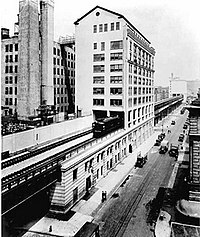 Train passing through the Bell Laboratories Building, seen from Washington Street in 1936. Only the track segment that runs through the third level of the building, and atop its two-story extension, still exists.[1]
Train passing through the Bell Laboratories Building, seen from Washington Street in 1936. Only the track segment that runs through the third level of the building, and atop its two-story extension, still exists.[1]In 1847, the City of New York authorized the construction of railroad tracks along Tenth and Eleventh Avenues on Manhattan's West Side. The street-level tracks were used by the New York Central Railroad's freight trains, which shipped commodities such as coal, dairy products, and beef.[2][3] For safety the railroad hired "West Side cowboys", men who rode horses and waved flags in front of the trains.[4] However, so many accidents occurred between freight trains and other traffic that the nickname "Death Avenue" was given to Tenth[5][6] and Eleventh Avenues.[2] In 1910, one organization estimated that there had been 548 deaths and 1,574 injuries over the years along Eleventh Avenue.[2]
 Bell Laboratories Building in 2017
Bell Laboratories Building in 2017Public debate about the hazard began during the early 1900s.[7] In 1929 the city, the state, and New York Central agreed on the West Side Improvement Project,[3] conceived by New York City park commissioner Robert Moses.[8] The 13-mile (21 km) project eliminated 105 street-level railroad crossings, added 32 acres (13 ha) to Riverside Park, and included construction of the West Side Elevated Highway.[9] The plans also included the construction of the St. John's Freight Terminal at Spring Street,[10] which was completed in 1936[11] and replaced the street-level St. John's Park Terminal in present-day Tribeca.[12] The West Side Improvement cost more than $150 million,[9] worth about $2.56 billion in 2022 dollars.[13] The last stretch of street-level track was removed from Eleventh Avenue in 1941.[7]
The first train on the High Line viaduct, part of New York Central's West Side Line, ran along the structure in 1933.[14] The elevated structure was dedicated on June 29, 1934, and was the first part of the West Side Improvement Project to be completed.[15] The High Line, which originally ran from 35th Street to St. John's Freight Terminal,[16] was designed to go through the center of blocks rather than over an avenue.[15][4] As a result, the viaduct's construction necessitated the demolition of 640 buildings.[15][7] It connected directly to factories and warehouses, allowing trains to load and unload inside buildings. Milk, meat, produce, and raw and manufactured goods could be transported and unloaded without disturbing street traffic.[4] This reduced the load on the Bell Laboratories Building (which has housed the Westbeth Artists Community since 1970)[17] and the former Nabisco plant in Chelsea Market, which were served from protected sidings in the buildings.[6][18]
The line also passed under the Western Electric complex at Washington Street. Although the section still existed as of May 2008[update], it is not connected to the developed park.[6][1]
Abandonment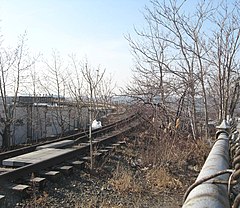 Abandoned High Line tracks in 2009 (current phase 3 section at 34th Street)
Abandoned High Line tracks in 2009 (current phase 3 section at 34th Street) Reconstructed tracks at 20th Street, 2010
Reconstructed tracks at 20th Street, 2010The growth of interstate trucking during the 1950s led to a drop in rail traffic throughout the U.S.[14] St. John's Freight Terminal was abandoned in 1960,[19] and the southernmost section of the line was demolished in the following decade due to low use.[20] The West Village Apartments were then built on part of the former segment's right of way.[21] The demolished section began at Bank Street and ran down Washington Street to Spring Street (just north of Canal Street).[22]
By 1978, the High Line viaduct was used to deliver just two carloads of cargo per week. The viaduct was shut down in 1980, when owner Conrail had to disconnect the viaduct from the rest of the national rail system for a year. The closure was necessitated as a result of the construction of Javits Center at 34th Street, which required that the curve at 35th Street be rebuilt.[14] The last train on the viaduct was a three-car consist carrying frozen turkeys.[4][6][21] During the time the viaduct was disconnected, two large customers along the route moved to New Jersey.[14] The curve to the viaduct from 35th Street was demolished during the construction of Javits Center and was replaced by the current curve at 34th Street.[16] The tracks leading to the High Line were reconnected in 1981, but as there were no more customers along the route, the curve at 34th Street was never completed, and the viaduct did not see any further usage.[14] At this point, Conrail still owned the right of way and the tracks.[4][6][21]
During the mid-1980s, a group of property owners with land under the line lobbied for the demolition of the entire structure. Peter Obletz, a Chelsea resident, activist, and railroad enthusiast, challenged the demolition efforts in court and tried to re-establish rail service on the line.[4][21][23] Obletz offered to buy the viaduct for $10 in order to run a small amount of freight trains on the line, and Conrail accepted, mainly because demolition would have cost $5 million. However, this offer was also disputed in court. By 1988, the Metropolitan Transportation Authority was negotiating with Conrail for the possibility for using the line's right of way to construct a light rail route.[14] These negotiations did not proceed further, and by the end of the 1980s, it was expected that the High Line would be demolished.[24]
As part of the construction of the Empire Connection to Penn Station, which opened in spring 1991, the West Side Line tracks north of 35th Street were routed to the new Empire Connection tunnel to Penn Station. A small section of the High Line in the West Village, from Bank to Gansevoort Streets, was taken apart in 1991 despite objections by preservationists.[25] The remaining riveted-steel elevated structure was unused and in disrepair during the 1990s, but it remained structurally sound. Around this time, it became known to urban explorers and local residents for the tough, drought-tolerant wild grasses, shrubs (such as sumac) and rugged trees which had sprung up in the gravel along the abandoned railway. The administration of mayor Rudy Giuliani planned to demolish the structure.[6][26] The Interstate Commerce Commission approved plans to demolish the structure in 1992, but demolition was delayed due to disputes between various city government agencies and the railroad companies. Ownership of the viaduct ultimately passed to CSX Transportation in 1999.[27]
Repurposing proposalA nonprofit organization called Friends of the High Line[4] was formed in October 1999 by Joshua David and Robert Hammond.[27] They advocated its preservation and reuse as public open space, an elevated park or greenway similar to the Promenade Plantée in Paris.[28][29][30] The concept also drew inspiration from Landschaftspark Duisburg-Nord, Germany — a precedent for urban and industrial repurposing in modern landscaping.[31] The organization was initially a small community group advocating the High Line's preservation and transformation when the structure was threatened with demolition during Rudy Giuliani's second term as mayor.[32] In 2000,[27] CSX Transportation gave photographer Joel Sternfeld permission to photograph it for a year. Sternfeld's photographs of its meadow-like natural beauty, discussed in an episode of the documentary series Great Museums, were used at public meetings when the subject of saving the High Line was discussed.[33] Mary Boone's art gallery, as well as Martha Stewart and Edward Norton, hosted fundraising benefits for the High Line in 2001 and 2002 respectively.[27] Fashion designer Diane von Fürstenberg (who had moved her New York City headquarters to the Meatpacking District in 1997) and her husband, Barry Diller, also organized fundraising events in her studio.[33]
In 2003, Friends of the High Line sponsored a design competition that attracted more than 720 participants from 38 countries.[20][34] Proposals included a sculpture garden, an elongated swimming pool, and a linear amusement park/campground.[20][35] In July 2003, Edward Norton and Robert Caro hosted a benefit event at Grand Central Terminal, where the submissions for the design contest were exhibited.[27] The same month, a bipartisan group of city officials began petitioning the federal Surface Transportation Board to hand over title to the viaduct for park use.[36] In anticipation of this handover, the administration of Mayor Michael Bloomberg announced plans for a High Line park that September.[37] The following year, the New York City government committed $50 million to establish the proposed park. Mayor Bloomberg and City Council speakers Gifford Miller and Christine C. Quinn were among the major supporters. Fundraising for the park raised a total of over $150 million (equivalent to $204,607,000 in 2022).[38] The Surface Transportation Board issued a certificate of interim trail use on June 13, 2005, allowing the city to remove most of the line from the national rail system.[39] Ownership officially passed from CSX to the city that November.[40]
Linear park Reconstruction and designOn April 10, 2006, Mayor Bloomberg presided over a ceremony to mark the beginning of construction. The park was designed by James Corner's New York-based landscape architecture firm Field Operations and architects Diller Scofidio + Renfro, with garden design by Piet Oudolf of the Netherlands, lighting design from L'Observatoire International,[41] and engineering design by Buro Happold[42] and Robert Silman Associates.[43] New York City Department of City Planning director and city planning commission chair Amanda Burden contributed to the project's development.[44][45] Major supporters included Philip Falcone,[46] Diane von Fürstenberg, Barry Diller, and von Fürstenberg's children Alexander and Tatiana von Fürstenberg.[47] Hotel developer Andre Balazs, owner of the Chateau Marmont in Los Angeles, built the 337-room Standard Hotel straddling the High Line at West 13th Street.[48]
The southernmost section, from Gansevoort Street to 20th Street, opened as a city park on June 8, 2009.[49] The section includes five stairways and elevators at 14th Street and 16th Street.[50] Around the same time, construction of the second section began.[51] A ribbon-cutting ceremony was held on June 7, 2011, to open the second section (from 20th Street to 30th Street), with Mayor Michael Bloomberg, New York City Council speaker Christine Quinn, Manhattan Borough President Scott Stringer and Congressman Jerrold Nadler in attendance.[52][53] CSX Transportation, owner of the northernmost section from 30th to 34th Streets, agreed in principle to donate the section to the city in 2011;[47] the Related Companies, which owns development rights for the West Side Rail Yards, agreed not to tear down the spur crossing 10th Avenue.[54] Construction on the final section was started in September 2012.[55][56]
 The Whitney Museum of American Art opened its new building on Gansevoort Street, next to the south end of the High Line, in 2015.
The Whitney Museum of American Art opened its new building on Gansevoort Street, next to the south end of the High Line, in 2015.A ribbon-cutting ceremony for the High Line's third phase was held on September 20, 2014,[57][58] followed the next day by the opening of its third section and a procession down the park.[59][60][57] The third phase, costing $76 million, was divided into two parts.[61] The first part (costing $75 million)[62] is from the end of phase 2 of the line to its terminus at 34th Street, west of 11th Avenue.[61][63][64] The second part, a spur above Tenth Avenue and 30th Street, has room to install artworks curated by the public art program.[65][66][67] The spur was scheduled to open by 2018,[68] but was then delayed to April 2019,[69] and later to June 2019.[70] It opened on June 4, 2019, with the installation of a plinth as its initial artwork.[71][72] It contains entrances to 10 Hudson Yards,[73] built above the spur.[74]
Subsequent developmentsThe High Line closed temporarily in early 2020 during the COVID-19 pandemic in New York City; while most parks remained open during the pandemic, the High Line is a linear park with few means to spread out for social distancing measures.[75][76] The High Line reopened on July 16, 2020, with limited capacity: the section between Gansevoort and 23rd streets were only open to visitors with timed-entry passes, and were only able to walk northbound from Gansevoort Street, with the other access points being for egress only.[77] As of January 2021[update], weekend admissions still required a pass but weekday admissions did not.[78]
During the pandemic, a team of 60 people hosted a Zoom call twice a week to plan an extension of the High Line.[79] On January 11, 2021, Governor Andrew Cuomo announced proposals to extend the High Line east to Moynihan Train Hall and north to Hudson River Park.[80][81] The 1,200-foot (370 m) Moynihan Connector was planned to cost $60 million and run east to Ninth Avenue. A second spur would diverge from the Phase 3 walkway at 34th Street, running north to the Javits Center and then turning west to cross the West Side Highway to Hudson River Park.[80][82] When the spurs were announced, neither of the projects had been funded.[80] As of September 2021, the Moynihan Connector was funded and was projected to be completed in early 2023 at a cost of $50 million.[83][84] A groundbreaking for the Moynihan Connector occurred on February 24, 2022,[85][86] although major construction did not begin until later the same year.[87] The Moynihan Connector opened on June 22, 2023.[88]
















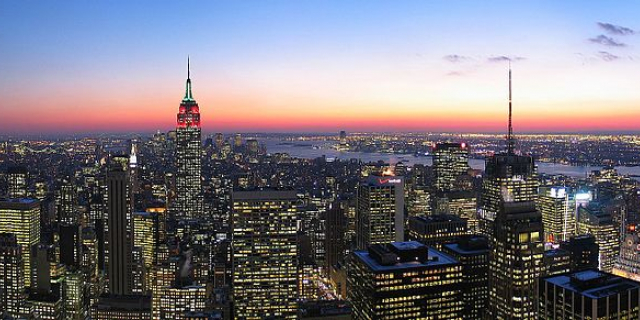







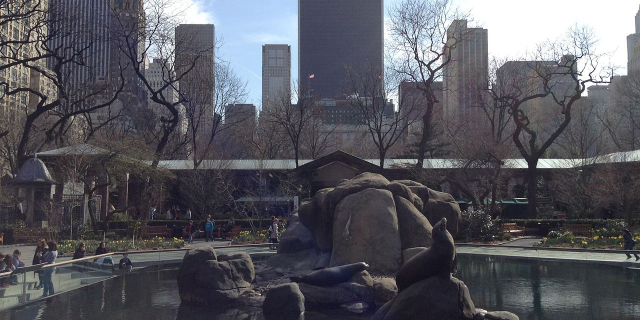




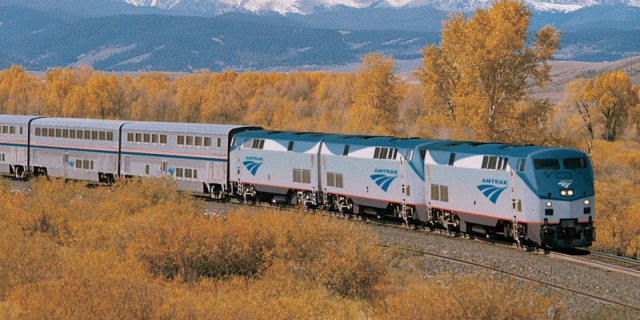


Add new comment